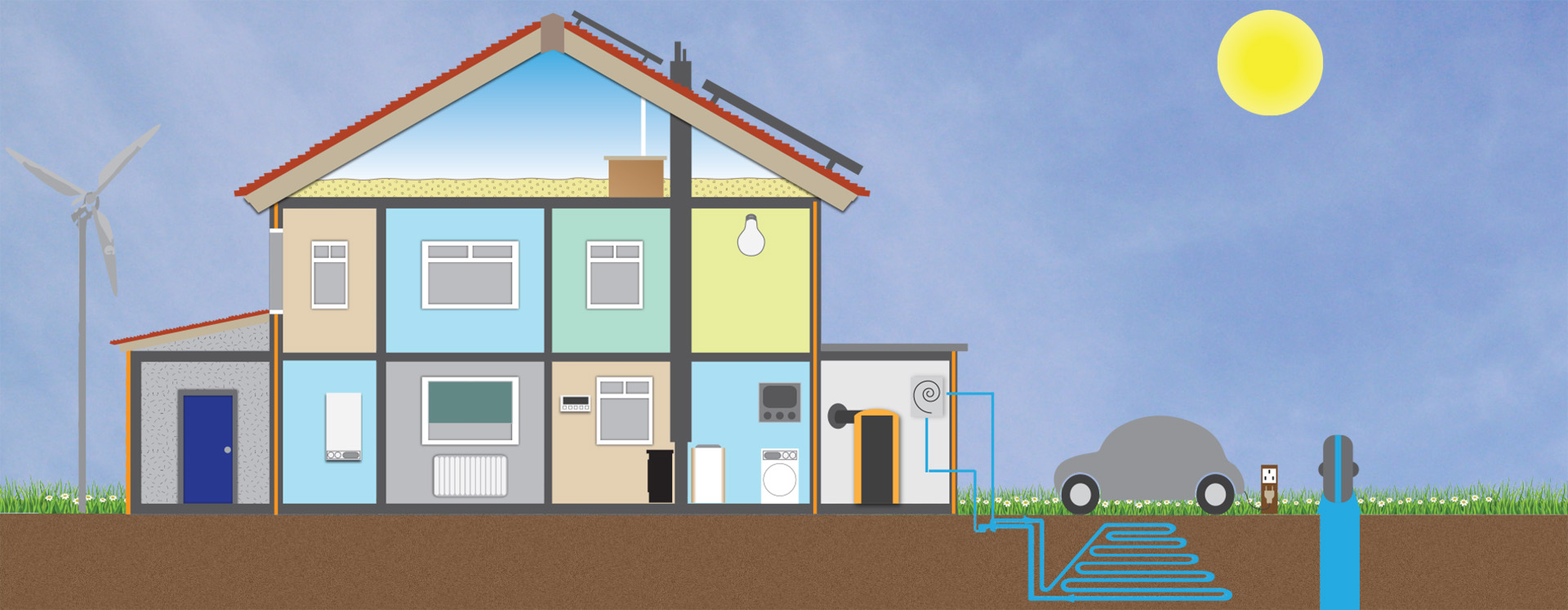How do heat pumps work?
- Step 1: Collecting the Heat
Heat collection for GSHP is achieved by installing a series of pipes in the ground – the ground loop. They are buried a metre deep and contain a water-glycol mix at a low temperature. The surrounding soil is naturally at a higher temperature, typically 10-13oC, and gently warms the glycol mix as it is pumped around the ground loop.
A temperature increase of the ground loop fluid of just 3 or 4 degrees is all the heat pump requires. The returning warmed liquid is fed into a heat exchanger/evaporator.
For ASHP, heat is collected from the air by a series of pipes running through fins – similar to the fins on the back of a fridge that are used to dissipate heat collected from inside the fridge. The method of heat collection is the only major difference between GSHP and ASHP. - Step 2: The Evaporator
The purpose of the Evaporator is to take the collected heat out of the ground loop liquid and return it cooled to the pipe for the next cycle. It does this by using a refrigerant that boils at approximately -10oC, the act of boiling turns the refrigerant into a vapour, which is then moved into the Compressor. - Step 3: The Compressor
In the Compressor the vapour is compressed in volume and as its volume reduces, its temperature increases. Temperatures of between 75 and 125oC are achievable and the gas is then fed through a heat exchanger. - Step 4: Condenser/heat exchanger
Feeding the hot gas through a condenser allows the refrigerant to turn back into a liquid. As it condenses it cools and releases its heat through a heat exchanger into the hot water and central heating system.
What are the limitations?
Heat pumps will be at their most efficient in applications where high levels of insulation have already been installed, and are generally used only where no mains gas is available. Although the high efficiency might seem attractive, electricity costs are considerably more than gas for the same output, so installing a heat pump where gas is available might not save money. Heat pumps really only work well if the house is well insulated, and heated by an underfloor heating system or has oversized radiators.
How much will I save?
How much you can save will depend on what system you use now, as well as what you are replacing it with. In order to calculate potential savings you will need to consider:
a) cost of installation including upgrading radiator system or installation of underfloor heating,
b) how much you currently spend on fuel, savings will be greater where you are reliant on more expensive fuels such as electricity, oil or LPG.
Our installers will be able to give you an idea of savings achievable and possible payback times. You may be able to receive payments for the heat you generate using a heat pump through the government’s Renewable Heat Incentive. Heat pumps also qualify for financing under the government’s Green Deal scheme.
Do I need planning permission?
Heat pump installations may be considered Permitted Development, in which case you will not need planning permission, but to be sure it is always a good idea to check with your local planning office or talk to our approved installers.
Summary
- Heat pumps are renewable technologies for heat for central heating and/or hot water.
- Heat pumps need electricity to run but use less electricity than other forms of electric heating.
- A Heat pump will only save money and carbon if you have a really well insulated house and perhaps an underfloor heating system.
- In most houses around here gas is cheaper (if it is available!)
- You may qualify for payments through the Renewable Heat Incentive.

